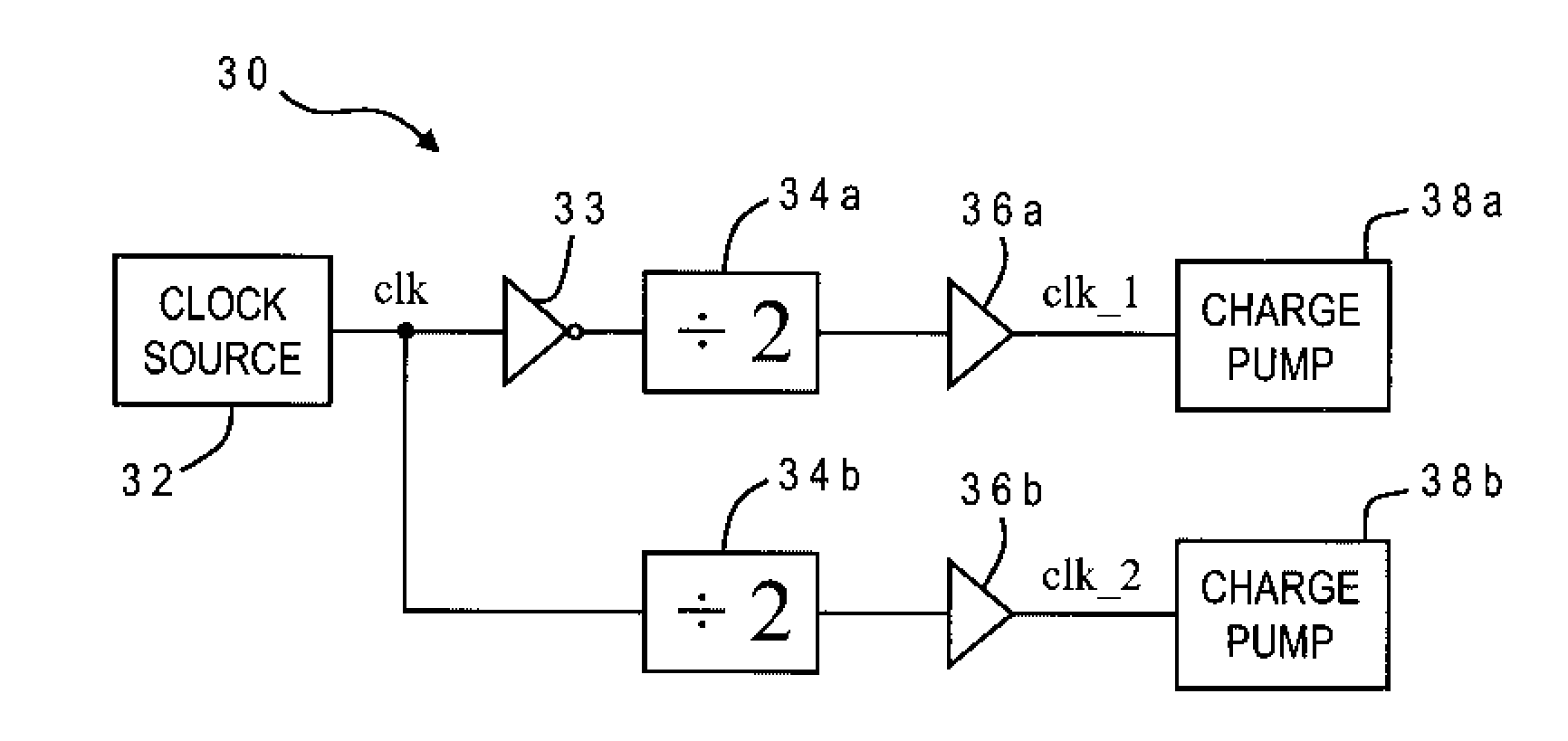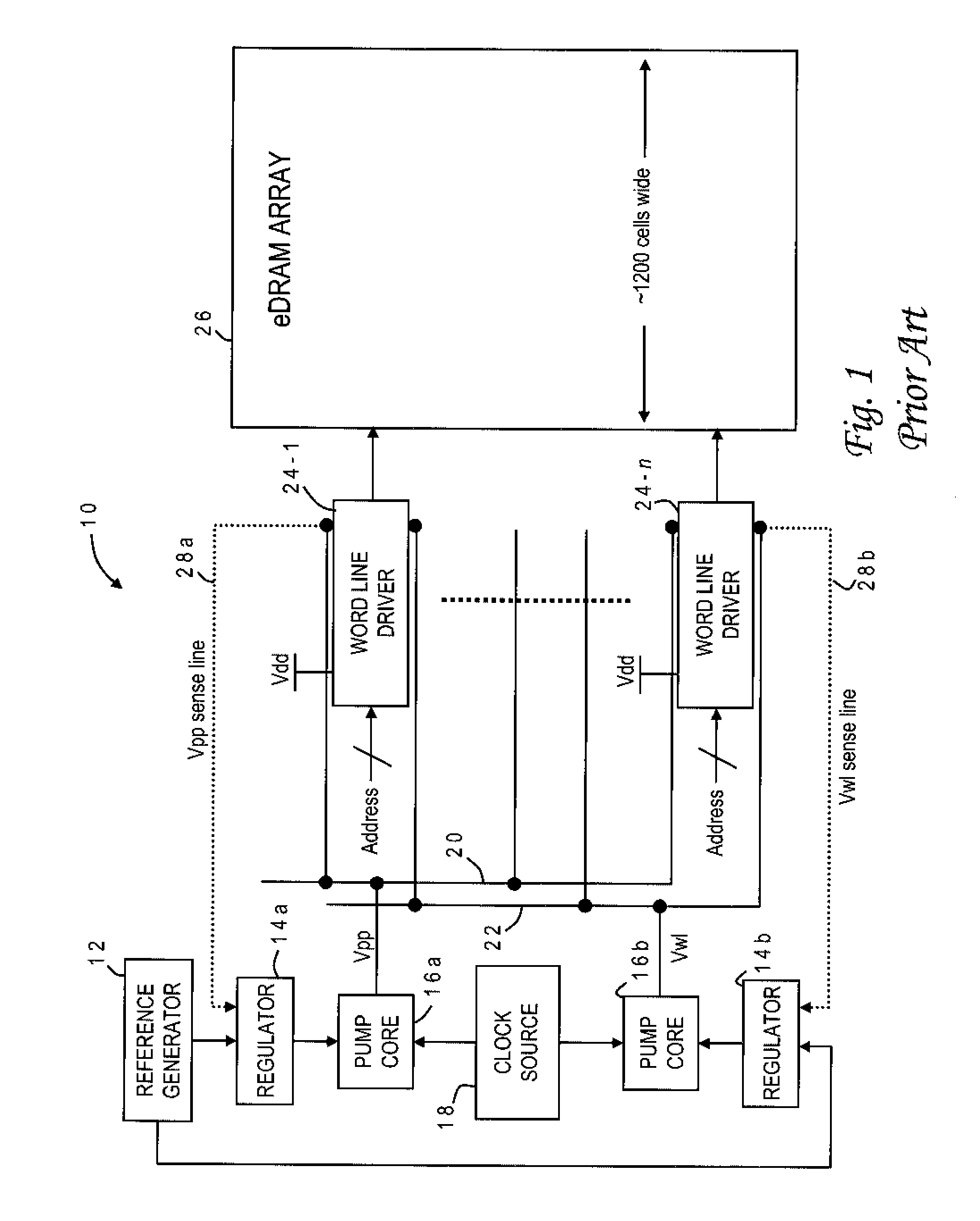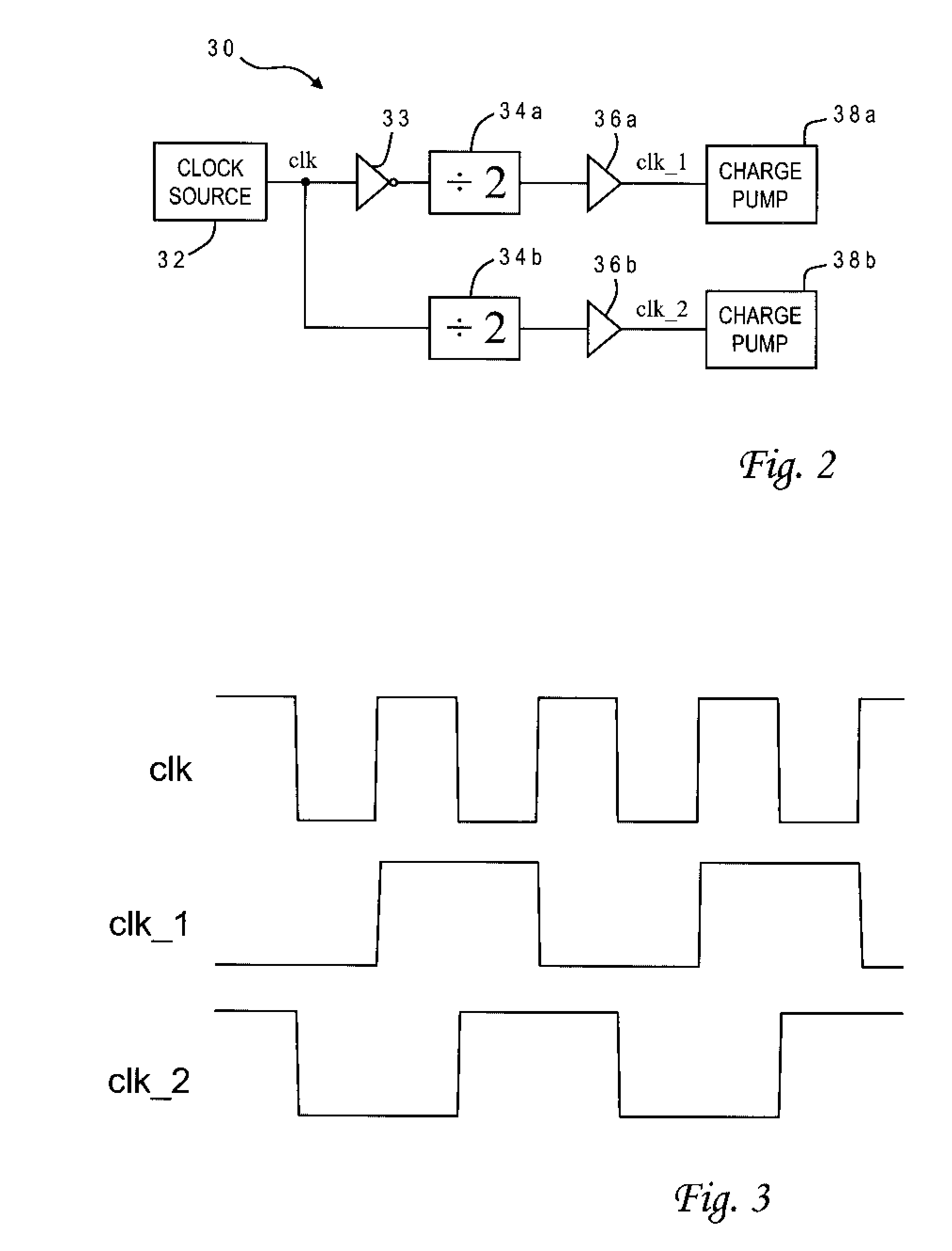Peak Power Reduction Methods in Distributed Charge Pump Systems
a charge pump and peak power technology, applied in the direction of generating/distributing signals, pulse techniques, instruments, etc., can solve the problems of high cost and inefficiency of excess power usage, heat management problems, and special problems, and achieve the effect of optimizing voltage regulation and reducing peak power usag
- Summary
- Abstract
- Description
- Claims
- Application Information
AI Technical Summary
Benefits of technology
Problems solved by technology
Method used
Image
Examples
Embodiment Construction
)
[0028]With reference now to the figures, and in particular with reference to FIG. 2, there is depicted a simplified embodiment 30 of a distributed charge pump system constructed in accordance with the present invention. Distributed charge pump system 30 is generally comprised of a clock source 32, a delay element 33 which receives the clock signal “clk” from clock source 32, a first frequency divider 34a which receives a delayed clock signal from delay element 33, a second frequency divider 34b which receives the undelayed clock signal from clock source 32, two buffers 36a, 36b respectively connected to the outputs of frequency dividers 34a, 34b, and two charge pumps 38a, 38b driven by respective clock signals “clk_1” and “clk_2” from buffers 36a, 36b. Clock source 32 may for example be a phase-lock loop circuit utilizing an oscillator. Delay element 33 is an inverter in this embodiment but may comprise other circuit structures which exhibit a known delay in conveying the clock sig...
PUM
 Login to View More
Login to View More Abstract
Description
Claims
Application Information
 Login to View More
Login to View More - R&D
- Intellectual Property
- Life Sciences
- Materials
- Tech Scout
- Unparalleled Data Quality
- Higher Quality Content
- 60% Fewer Hallucinations
Browse by: Latest US Patents, China's latest patents, Technical Efficacy Thesaurus, Application Domain, Technology Topic, Popular Technical Reports.
© 2025 PatSnap. All rights reserved.Legal|Privacy policy|Modern Slavery Act Transparency Statement|Sitemap|About US| Contact US: help@patsnap.com



